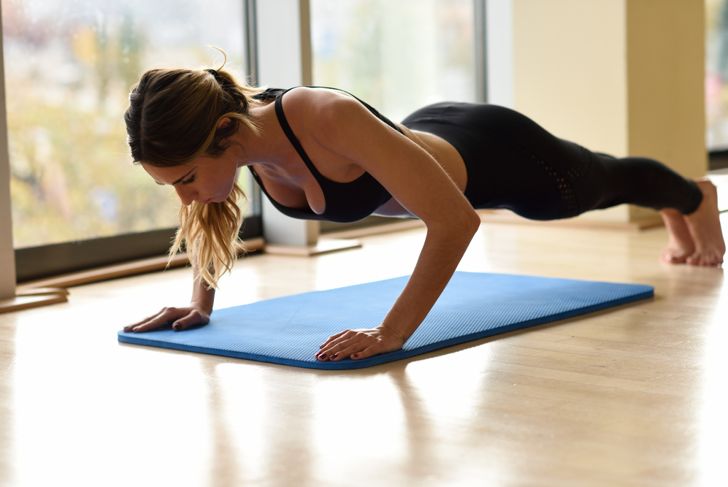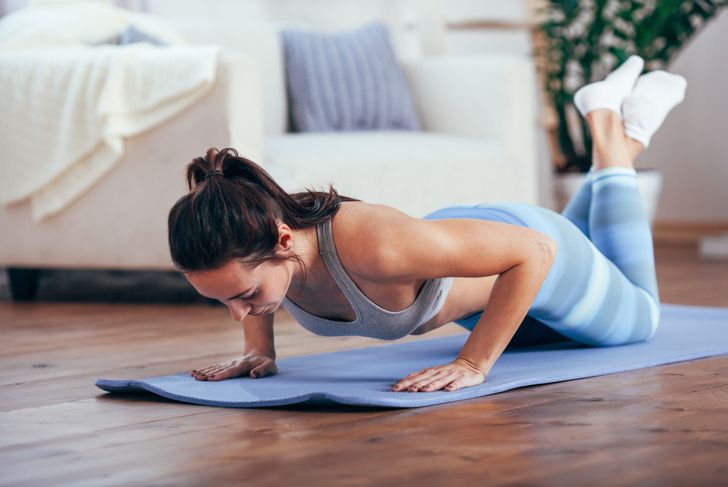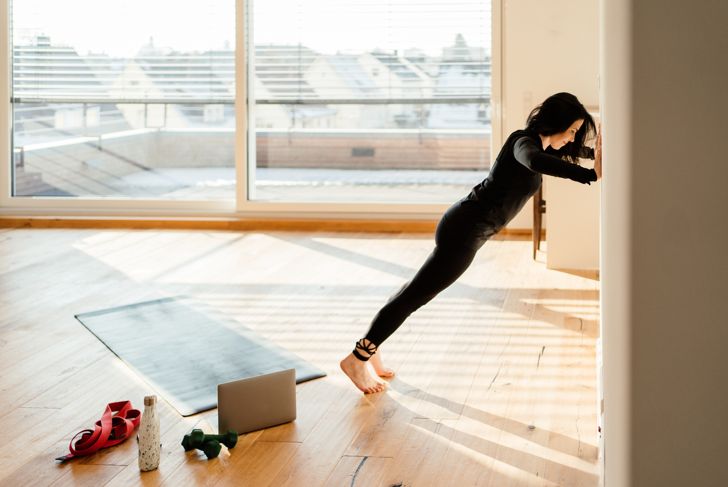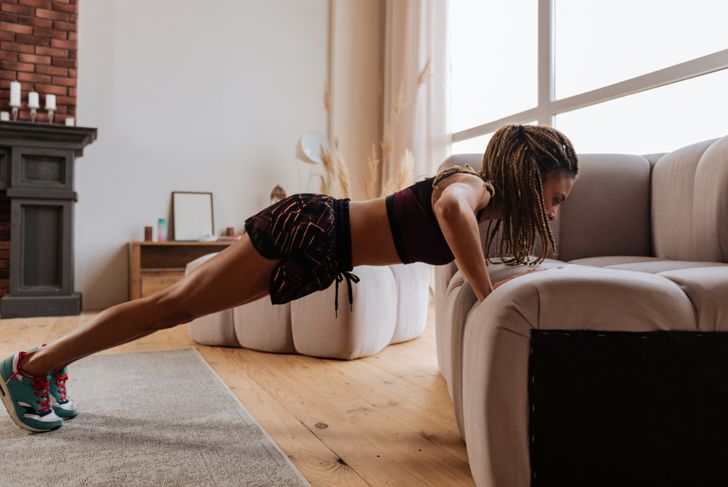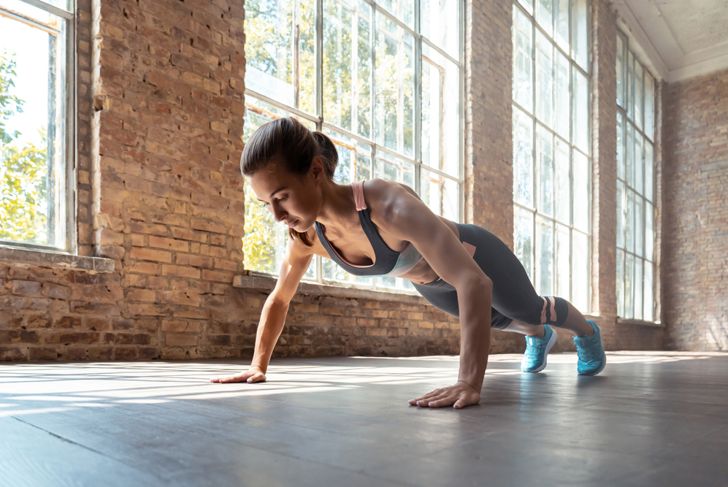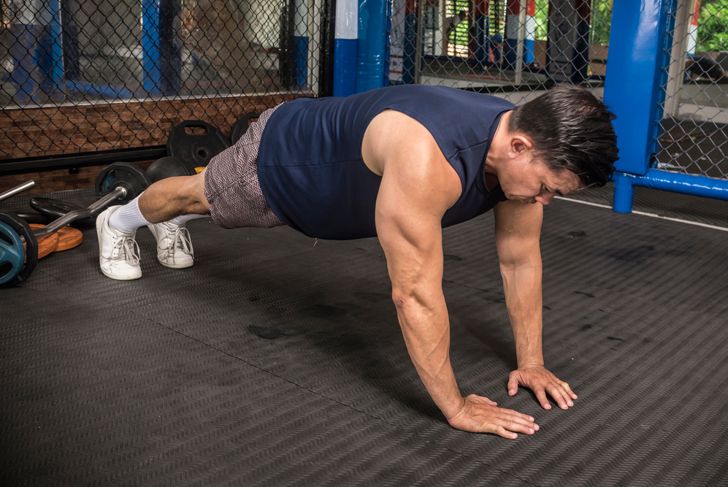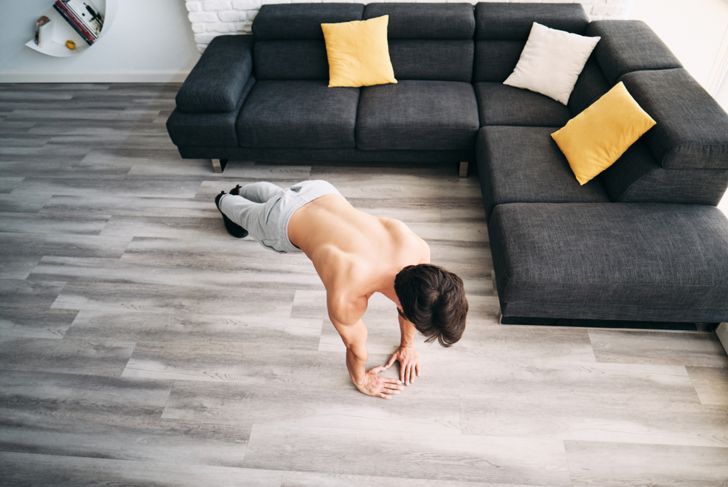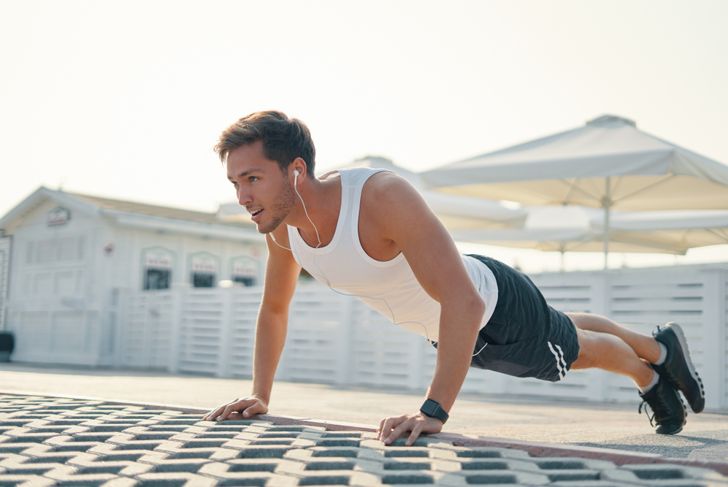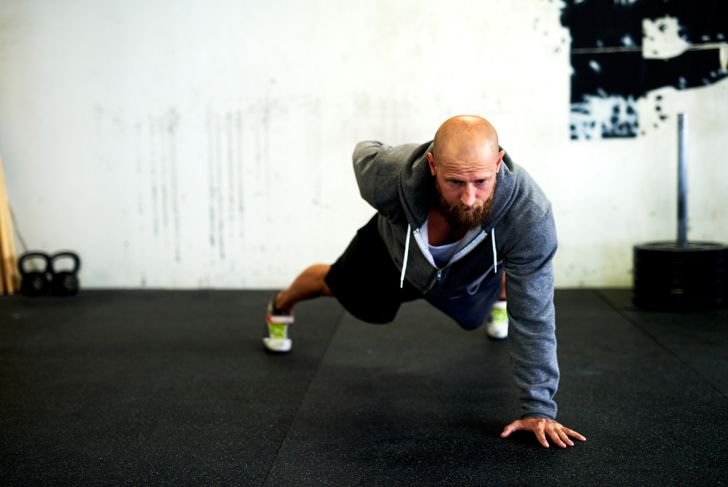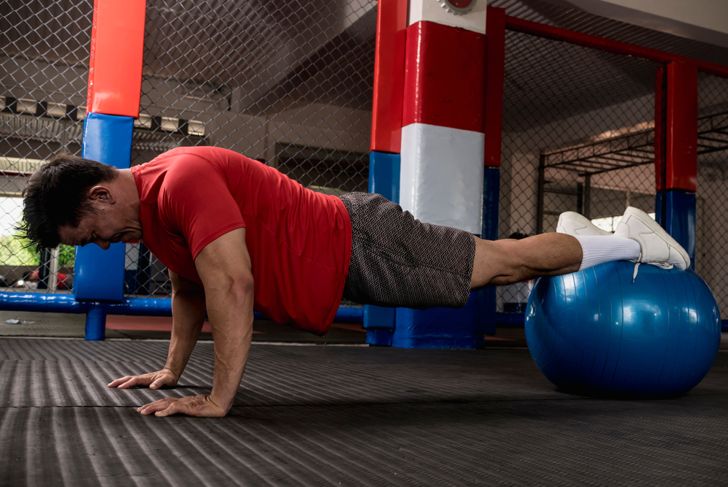The pushup is one of the most common general conditioning exercises that you can do anywhere, equipment-free. It strengthens the pectoral, tricep, and shoulder muscles.Like most exercises, pushups have variations that work different muscles or modify the movement for different abilities. Just about anyone can benefit from some kind of pushup, regardless of fitness level.
Standard Pushup
Assume the plank position while placing your hands under your shoulders. Lift your chest and engage your core while looking just past your hands to ensure your spine is aligned and remains neutrally positioned. Slowly bend your elbows — pointing them backwards, not out to the sides — and lower your body as you inhale. Good posture is vital to support your full body and engage your muscles accordingly.Carefully push yourself back up as you exhale and rise back to the original position. Ensure you do not arch your back to avoid injury. While tucking your elbows close to your body, draw your shoulder blades down and back. If your back sags or you can’t push yourself up and down while remaining straight, try a modification.
Knee Pushup
The close-grip knee pushup is an easier variation suitable for people who are new to pushups. By shortening the distance between supports — hands and knees instead of hands and toes — the core has less body length and weight to support. Knee pushups can still improve core stability and involve a full range of motion.Start by kneeling on the floor. Extend your arms shoulder-width apart on the ground. Firm your core, then lower your torso until it grazes the floor. Then push yourself up back in a controlled motion. As with a standard pushup, you should still ensure your body is in a straight line from your knees to the top of your head.
The Wall Pushup
This pushup variation is great for people who are new to pushups or who lack adequate upper body strength to perform a standard pushup. It is also ideal for anyone with a shoulder injury. Wall pushups help build your chest and shoulder strength which placing a reduced load on these muscles.Stand in front of a wall. The farther you need to lean forward to reach the wall, the more challenging the exercise will be. Place your feet shoulder-width apart, then lean forward and place your hands on the wall at shoulder height. Bend your elbows and move your chest toward the wall with control. Engage your core to get more out of the movement. Exhale and return to the extended-arm position.
The Incline Pushup
An incline pushup can be a modification to make the exercise easier, or an increased challenge, depending on what you use to angle your body. By placing your hands on a stable elevated surface like a bench, you give yourself more leverage and make the move slightly easier. This is a good intermediate modification once you have moved beyond wall or knee pushups.Elevating the hands with an unstable surface such as a medicine ball can make the pushup more challenging. Not only are the hands placed closer together, but the movement of the ball requires more core stability during the exercise.
The Wide Pushup
Assume the normal pushup position, but place your hands wider than shoulder-width. This forces more of the work into your chest. Lower your body, then push yourself to the original position. The wide pushup still works and strengthens the triceps and shoulders, in addition to the chest. It also works the serratus anterior, which lift the ribs and assist in respiration.
The Narrow Pushup
Assume the normal pushup position, but place your hands just a few inches apart, under your chest. In the standard pushup movement, lower your body while inhaling and push yourself up while exhaling.The narrower hand placement of this pushup variation focuses more of the work in your triceps. More than the wide and standard pushup, the narrow pushup produces improved triceps and pectoral major activation.
The Diamond Pushup
The diamond pushup is a more challenging close-grip pushup that involves forming a diamond shape with your thumbs and forefingers. This pushup variation works the chest, shoulder, and tricep muscles. Assume the regular pushup position and place the hands together. Make sure the diamond your fingers form is right below your chest.You can slightly vary the diamond pushup by putting the hands on a raised surface (easier) or the feet (harder).
The One-Leg Pushup
Assume the standard pushup position. Keeping the hips level, raise one leg a few inches, with the toes still pointing to the ground. Hold it up like this, or place the toes of that foot on the heel of the other.You can do one pushup and switch legs, or do your full set on one side, and then a set on the other. Ensure you engage your core to help you remain in position throughout the exercise. This kind of pushup challenges your core stability while working the usual muscles.
The One-Arm Pushup
This extremely difficult variation involves the standard pushup using only one hand. It challenges stability and strength and should only be attempted once a person has mastered standard pushups.Assume the standard pushup position, but bring your feet out wider than hip-width for more stability. Bring the other arm to your side or behind your back. Lower your body, then push yourself back up.
The Decline Pushup
A decline pushup is another more advanced pushup option, though it will be easier than single-arm for more people. Position a box or bench behind you and come into plank position with your feet raised. The higher the elevation, the more pressure the pushup will place on your chest and shoulders, and the more strength you’ll need to complete the exercise.Though you should be pushing straight up and down, not away from you, it’s still safest to place the bench or box against a wall so it doesn’t slide out from under you.

 Home
Home Health
Health Diet & Nutrition
Diet & Nutrition Living Well
Living Well More
More